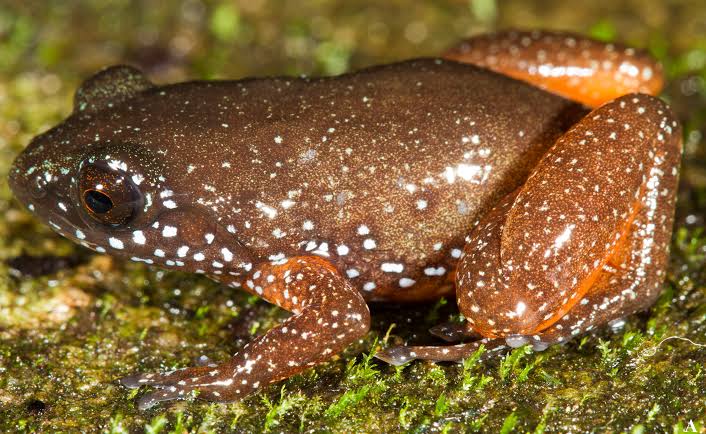Biodiversity & Environment
Astrobatrachus Kurichiyana Frog
- 13 Mar 2019
- 3 min read
Recently a starry dwarf frog, named after constellation-like markings on it and Wayanad’s Kurichiya tribe, has been discovered in Wayanad district, Kerala.
- Features of the Frog

- It is about 2cm to 3cm long and is the sole member of an ancient lineage, a long branch on the frog tree of life that researchers have classified as a new subfamily, Astrobatrachinae.
- Dark brown with a bright orange underbelly and speckled with pale blue dots, the frog camouflages well in wet leaf litter.
- It is Nocturnal.
- Scans of its skeletons showed it to be completely different from any other similar-sized frog seen in Wayanad, some of its physical characteristics (such as its triangular finger- and toe tips) closely resembled frogs in South America and Africa.
- However, Genetic studies revealed that its closest relatives are the Nycibatrachinae group of frogs that dwell in the streams of Western Ghats, and the Lankanectinae frogs of Sri Lanka.
- Researchers still do not know its life cycle, the sound of its call or whether the species is threatened or endangered.
Kurichiya Tribe
- The tribe is also known as Malai Brahmins or Hill Brahmins.
- They are the second largest adivasi community in Wayanad district. They stand at the top of the caste hierarchy among the hill tribes of Wayanad.
- The community was named Kurichiya by the Kottayam Raja for the community’s expertise in archery. The name is derived from the phrase ‘kuri vechavan’, which means ‘he who took aim’.
- It is also said that the name `Kurichiya’ is derived from the kuri or the sandalwood paste that they apply on their foreheads and chests as a custom.
- They are land-owning communities, and follow a matrilineal household system.
- They followed slash and burn (shifting) cultivation known as Punam cultivation.
- Nellukuthu Pattu is their art form.
Significance
- India, once part of Africa, split from Madagascar about 89 million years ago and drifted northeast. Its long isolation as an island provided fertile ground for the evolution of new life forms and may have sheltered species that disappeared elsewhere.
- Finding ancient lineages like Astrobatrachinae can help fill in in the region's distant biological past and may answer the perennial question that whether peninsular India's frogs are the descendants of African ancestors or they first originated in Asia and then moved south.






